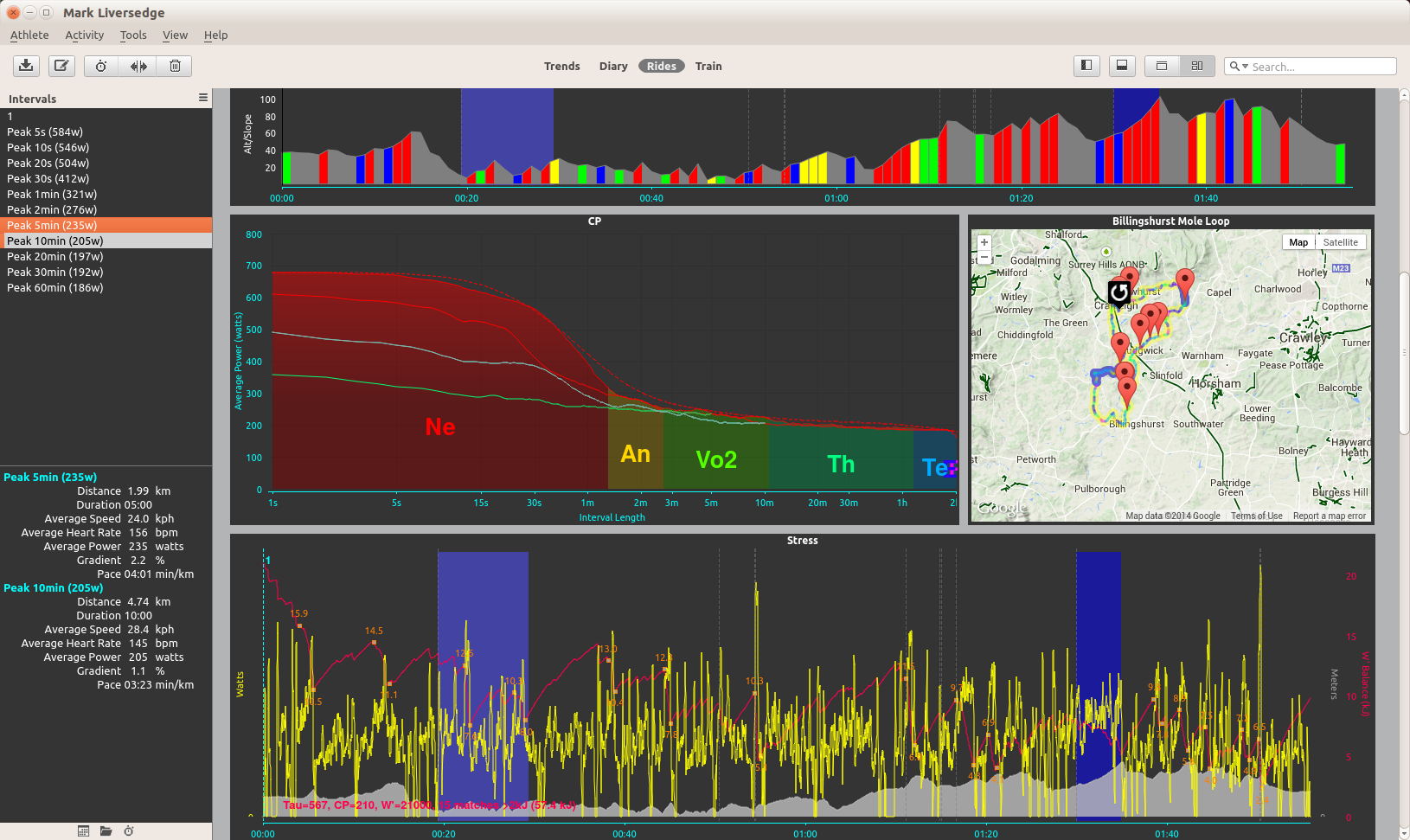
You can get Golden Cheetah v2 by simply going to the Ubuntu Software Center but "virtual power" is only available in v3. The next part is where it gets a little tricky. Sudo apt-get install vlc browser-plugin-vlc copy and paste the following lines one at a time and hit enter after each line. Hold down the Ctrl and Alt buttons at the same time and then hit the t button. Now that you have Ubuntu, it is time to install the software. Make sure you are connected to the internet during installation.


Once you have a bootable image, put the media in the computer you plan to use as a power-meter and boot the computer from the disc or drive. Once you have it downloaded you need to burn it to a disc or thumbdrive. If you have a single core processor I would go with 32-bit, multi-core 64-bit. To get started, use any computer and go to ĭownload the flavor you need. Because of that price point, Ubuntu is a no-brainer.
#Goldencheetah virtual power how to
My goal is to keep the price less than $100 but in reality some people probably have everything they need already but just need to know how to put it together. You can use Windows or Mac (OS whatever) but need to use a more powerful processor and more RAM. I also use VLC so I can watch a training video at the same time. It also will upload the data into TrainingPeaks. I use Golden Cheetah v3 which is a free download and does real time virtual power. With this guide and a few cheap parts you should be able to build your own power-meter.Īnt+ Speed/Cadence Sensor (I use a Garmin GSC-10įor an OS I use Ubuntu (because it is free) which runs fine on older/legacy (cheap) computers. Now that winter is coming, it is a perfect time to get ready for indoor training with a power-meter.


 0 kommentar(er)
0 kommentar(er)
